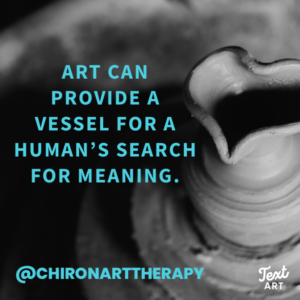I think about containment all the time. It is one of the things lacking in most community mental health right now. AI or cookie-cutter therapy can’t provide containment because that system lacks it by design. So, today I want to explore trauma treatment in depth therapy, the therapeutic container
Setting the Container: The Power of Consistent, Frequent Therapy for Trauma Treatment in Depth Therapy
One of the first aspects of trauma treatment in depth therapy is creating a safe, secure, consistent therapeutic container means that you set the following at the beginning of therapy and, for the most part, stick to it:
Establishing the Container Foundations: Fee, Session Length, Frequency, and Timing
- The fee
- Session length
- Session frequency (at least once a week)
Feeling Secure in Trauma Treatment in Depth Therapy
More on the Container: Session time during the week Navigating Boundaries: Third Parties and Confidentiality
- No third parties, including other members of the family, partners, etc.
- This rule of thumb also pertained to third-party payments, including insurance, in a traditional Freudian setting.
The client agrees to show up on time, pay for the session on time, and be as truthful as possible.
Being truthful does not mean you have to disclose things you aren’t ready to discuss yet.
Why does trauma therapy have to be at least once a week in depth therapy?
168 Hours: Why Once a Week Therapy Sessions Matters
There are 168 hours in a week. Therapy is not just about the hour in session but the other hours where you wrestle with what you’re doing in therapy, practice, and process. Less than once a week, and too much has happened.
It means that as life’s natural chaos unfolds, you move through it, and by the time you get back to therapy, it might be water under the bridge or yesterday’s news. Trauma creates a sensitivity to reactions to anything stressful that life throws at you. See one of my favorite videos about how triggering looks in the brain here.
That means that emotions that have been triggered or have arisen from the unconscious are no longer active. Therefore, the client can no longer access the previously activated complex during the therapy session because too much time has passed. When the therapy is consistent, the client can keep those emotions in their consciousness and process them.
Holding the Tension – Therapy isn’t Just about Feeling Good
Jungian Analyst Marion Woodman called this “holding the tension.” My previous teacher, Michael Conforti, used the analogy of holding the tension on a deep-sea fishing line. If you let up on the line, the fish can get off the hook and escape. If you can keep the tension on, we can pinpoint the origins of the complex and help release the energy trapped there.
This process is where the subsequent stages of trauma healing occur.
Jungian Insights: Temenos and the Magic of Transformation
 Jungians like using Jung’s quote about temenos when they talk about containment. Jung’s statement about this is that the therapy can be like a temenos, or as if it is a magician’s magic circle that is a container for fundamental, transformational change to occur. What is magic? My first analyst used to quote Jung, saying, “Remember Maggi, when it feels like magic, it’s psychological. Marie Lousie von Franz likened the modern psychologist to taking the role of the psychopomp.
Jungians like using Jung’s quote about temenos when they talk about containment. Jung’s statement about this is that the therapy can be like a temenos, or as if it is a magician’s magic circle that is a container for fundamental, transformational change to occur. What is magic? My first analyst used to quote Jung, saying, “Remember Maggi, when it feels like magic, it’s psychological. Marie Lousie von Franz likened the modern psychologist to taking the role of the psychopomp.
The psychopomp guided people between the waking realms of everyday life, through the underworld, and back again.
Transformation and Descent Myths – What they Tell us about Trauma Work
Think about the mythic stories of Persephone, Inanna, and Gilgamesh. In these stories, the characters go into the realm of the dead (a grief process), retrieve something that was lost or hadn’t been integrated into consciousness (because of trauma), and reclaim their power. Finally, they return to the world changed, more mature, more empowered, wiser, and transformed.
This level is where depth psychology and Jungian analysis can go to treat trauma and help people find meaning, empowerment, and healing.
Building Trust and Safety to Do Deep Therapeutic Work
On the side of the therapist, they are caring for psyches, with attention, thought, caring, and empathy. This depth of work is not the work of “teaching skillsets.” Most clients I work with read books and research, learn new things independently, and have advanced degrees. It isn’t about some magic skillset or goal setting.
A Positive Mindset May Not Help
It isn’t about “trying harder” or “being a better person.” (These ideas counterintuitively increase a sense of shame). The complexes are unconscious. Complexes are often learned very early and drive behavioral patterns.
For example, recently, in my training analysis, we looked at the conditions of my premature birth and the archetypal pattern in my life. I was able to word it in a new way, as had been illustrated in my dreams.
The specificity of the metaphor fit.
It was like a key clicking into place in a lock. Emotional reactions can change, and then interpersonal outcomes can also change.
Art As Container Art Therapy
In art therapy, containment is also about using art to contain big, confusing emotions. It can be about holding a symbolic process you feel too small to handle alone. It can hold your energy and focus so you don’t feel distracted and overwhelmed. It can also create images to carry your unconscious metaphors that your emotional brain is trying to tell you but that your conscious, linear, speaking brain doesn’t understand.
Things that other therapists have told my clients:
“I don’t know what to tell you.”
“I can’t help you.”
“you are too traumatized for me to help you.”
“You are too resistant.”
This last one is a biggie.
Resistance in Therapy – Dealing with Shame in Therapy
The psychotherapeutic idea of a client resisting treatment is all about shame. What do I mean by that? It is challenging to open up when you don’t feel safe or feel embarrassed. For many clients, they have never felt safe with other people, and opening up meant more blame, shame, and abuse heaped on them.
How Long Does Trauma Therapy Take?
It takes as long as it takes to feel safe. This state is first in trauma treatment. For those with childhood trauma, it takes a long time, and a safe, secure therapeutic container can sometimes take years of consistency to build trust.
A Clinician’s Balance: Boundaries, Self-Care, and Quality Presence
Of course, if it takes years to build trust to treat pervasive historical trauma, the six sessions a year you get from your employer’s health or EAP coverage isn’t going to even scratch the surface!
Problems with the Mental Health Industry Trends
The other statements I mentioned above are due to several factors in the community mental health industry.
One is that most therapists in the United States have limited training in dealing with unconscious content. They avoid dreams, symbolism, and unconscious derivates (or don’t even notice them) because they don’t have training. Insurance drives much of the mental health industry; insurance companies are mainly interested in short-term, manualized, and easy-to-research processes because. . . Profit! I rest my case on that one.
Why am I not Getting what I Need in Therapy – Why Depth Therapy might be more Effective for Trauma Treatment?
When the Therapist Falls Short of What you Need
Another piece is that working with unconscious content and dreams requires a ton of training when there isn’t enough time to get in 2 years in graduate school. Going into the field, I knew I was interested in dreams, symbolism, and Carl Jung. When I first got it into my head that I was ready to put a career shift into action in 2013, my thought was to figure out if I wanted to be a Jungian Analyst. Here we are in 2024, and I am continuing that path as a training candidate in Jungian psychoanalysis at the Institute in Zurich.
“My Therapist Doesn’t Seem to Be Paying Attention”
Another factor is that in many settings, clinicians are debilitated under absurdly huge caseloads. They may run from one client to another all day with little time to write clinical notes or eat lunch.
They may take insurance reimbursement rates they haven’t raised since the late 1990s. They may be in private practice but haven’t raised their rates in 30 years to keep up with inflation and, therefore, have too big caseloads to make up for it. You don’t have time to think if you work too hard or for exceedingly long hours.
The aforementioned modus operandi is not caring for psyches. It is survival mode, and it leads to burnout. The research shows that a clinician should see, at most, 20 to 25 client hours a week if they are doing therapy and don’t have groups, meetings, and case management duties on top of their therapy sessions. Many agencies want a minimum caseload of 28-32 hours per week.
Some of the big online therapy setups only start paying decently to their clinicians if they are seeing 40 client hours a week. Then, they also expect texting and on-call, on-demand responsiveness. If your therapist has bad boundaries, they can’t model good boundaries for you to learn good boundaries in your life.
If you can’t turn off work, you can’t process, relax, REST, take care of yourself, learn new techniques, research cases, go to therapy, get supervision, and HAVE A LIFE.
Why Are Some Therapists in Private Practice and Are Self-Pay Only
The best care comes from a clinician who models good boundaries and self-care, has enough money and time to be rested and secure, and can focus on your care. This level of care and attention can’t be provided in survival mode.
Depth Therapy that is More than Listening
Some clients tell me they can feel the quality of my presence and focused attention. They feel like I am wading through their process with them and am engaged. I am consistent, show up, and am honest. I’m willing to give real feedback and collaborate with my clients so that we get to that point where the symbol “clicks” into place.
Working with Complexes in Depth Therapy for Trauma
Marie-Louise von Franz said that when the client and analyst reach a complex’s core in a session, a tremendous amount of energy is released.
Recognizing Change through Embodiment
You can feel it. You can also see it in the change in body posture, breathing, and the quality of the tension in the room.
Conclusion -Trauma Therapy at Your Pace – The Depth Therapy Container
In unlocking the transformative potential of therapy, we’ve explored the crucial role of a consistent therapeutic container, delving into the realms of trauma at a slow pace, the nature of unconscious complexes, symbolism, and the profound nature of healing.
Trauma, Grief, and Depth Therapy in Columbus, Ohio
If this clicks for you, if you recognize the need for a safe space to navigate your journey, then schedule a consultation with me. I offer trauma therapy, grief therapy, art therapy, and dream work online, extending my services to those in Ohio, New York, and Delaware.
In-Person Art Therapy for Individuals and Groups in Columbus, Ohio
I am available at my art therapy studio in Columbus, Ohio, for in-person sessions, whether individually or in groups.
Join me on this journey, creating a space where healing can flourish. Reach out, and let’s begin your transformative path to wholeness. It’s the great work of a lifetime.

